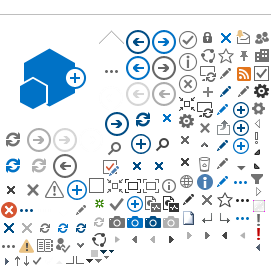A treasure chest of wonders: life on the Agulhas reefs
 By Toufiek Samaai, Sven Kerwath, Albrech Götz, Chris Wilke and Charlene Da Silva In April 2009, five marine scientists and three technicians spent two weeks on the Research Vessel, Ellen Khuzwayo on the Agulhas Bank. Chris Wilke, diving supervisor, mariner (skipper!), ship figurehead (Mr. Wilke) and dive chamber technician facilitated a total of 10 man dives on the reef and pinnacle habitats of the Alphards Bank and 12 Mile Bank. The group comprised of a team of marine ecologists (fish experts) from MCM, an ecosystem monitoring expert and fish ecologist from SAEON, a sponge (benthic) systematist and a shark biologist from MCM. Armed with a research ship, long lines, fish cages, dredges, CTDs, several cameras, collecting bags (or bottles), diving equipment, diving chamber and more enthusiasm than air, we prepared ourselves for our research adventure in discovering what lives on the hard reefs off the Agulhas Bank by documenting habitats and collecting fish, sharks, seaweed, sponges, echinoderms, sea anemones and bryozoans that live there.
Bathymetric map of part of the studied area on the Agulhas Bank showing Martha’s Reef, 12-Mile and Alphard Bank. So far, very little bathymetric information is available on the two additional research sites 45- and 72-Mile Bank (therefore not shown here).
The collaboration between the fish, shark and benthic ecologists was initiated by Dr Sven Kerwath (MCM) with the aim of understanding the diversity of benthic invertebrates and severely overexploited line fish and shark species on the Agulhas hard benthic banks. This project worked closely with marine scientists from SAEON and has played a critical role in evaluating methods for Long-Term Ecological Research and Monitoring (LTERM). This was the second time after the initial survey in 1987 that Alphards Bank and 12 Mile Bank had been dived or surveyed and a surprising diversity of habitats and species were uncovered especially amongst the benthic fauna. Faced with a bewildering array of taxa, we catalogued them in the different taxonomic groups to build on studies documenting offshore biodiversity on the Agulhas Bank.
One of the interesting discoveries of this trip was the diversity of benthic and fish communities on these mixed substrata and hard reef habitats, particularly on 72 Mile Bank, 45 Mile Bank and Alphards Bank. The finds that caused the most excitement were the capture of a 2 meter juvenile seven (7) gill cow shark and small stalked medusa like sponges that stood 1 cm tall attached to rubble & rock fragments in a soft-bottom habitat at depths of 80-100 m. This seems to be a new species of Asbestopluma, a carnivorous sponge genus, and on the list of priorities was to document and take the in-situ photographs for the field guide that sponge-bob is presently working on.
During the first dive at Alphards Bank, Sven, Charlene and Chris landed on the edge of the pinnacle at 43 meters where they started with their fish point counts. They were not disappointed, because just beyond the sampling point off the pinnacle the reef falls steeply away into unfathomable depths, leaving much to their imagination. On the second dive, Ali and I ventured alone with our cameras and plastic bags and discovered all sorts of new and exciting benthic things that we documented, photographed and collected. It was on this dive that we discovered the illusive green latrunculid sponge that may hold the cure to cancer, TB or HIV and "German invasive species".
|

